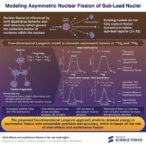
CAR T-cells attack cancer cell, 3D illustration. [Nemes Laszlo/Getty Images]
Barcelona’s blood and tissue bank, Banc de Sang i Teixits, reports that it has developed a new system for the large-scale production of mesenchymal stromal cells (MSCs). The team says they’ve validated a stirred-tank bioreactor system they hope will help supply hospitals with cheaper treatments for conditions including myocardial infraction and spinal cord injury.
“Because we’re a service provider for a national health system, undertaking independent research to identify and address unmet clinical needs, what we’ve tried to do is produce all the innovative medicines needed in a very rational way,” says Joaquim Vives, PhD, who heads the research group.
The scientists were inspired by watching the impact on commercial companies of having to scale out manual production of therapies to supply a larger number of patients. However, the researchers decided to avoid using an expensive bespoke solution. Instead, Vives’ team focused on small-scale production using commercially available bioreactors.
Linear scalability
“We didn’t want to invent the wheel, so we approached companies that produced single-use bioreactors,” he explains. “We began with small ones, three liters and now we’re aiming towards ten liters. The volumes are still small, but it remains scalable, and we’ve been able to use the platform to expand, in our most advanced project, MSCs.”
According to Vives, the advantage of a stirred-tank bioreactor is it’s almost linear scalability, unlike more self-contained commercially available systems. However, stirred tank bioreactors need microcarriers to help suspend the cells in solution and, to avoid unnecessary complexity, the team turned to the plastics used in commercial cell factories.
“To keep things as simple as possible, we’ve been using techniques available for decades,” Vives says. “To avoid getting too complicated, we didn’t want to use fancy microcarriers. Instead, we kept it straightforward.”
Since development, the system has been used to expand natural killer (NK) cells for therapies. It can also be used for allogenic CAR-T-style therapies that use donor cells to treat many patients, he says. The team has also defined critical process parameters (CPP) for the functioning of the new system, and a conducted a study that compared their current work to their previous adherent cell techniques.
Vives has published two papers on the work so far and presented at Bioprocessing Summit Europe earlier this year.


